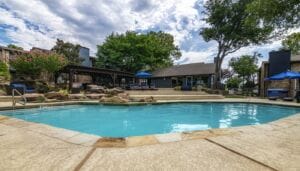Curt Woody has spent nearly his entire professional career in the building and development industries.
For the past 30 years, he’s worked in a variety of capacities within the commercial development industry from running his own company supplying the commercial building industry to working as a business development manager for Sundt Construction.
Today, he’s the director of economic development and tourism for the Town of Marana and president of the Arizona Association for Economic Development (AAED).
The mission of AAED is to serve as Arizona’s unified voice for its 470-plus members in advocating for responsible economic development through an effective program of professional education, public policy and collaboration.
To Woody, economic development is a funnel that catches all of the strategies and aspects of a community and directs it into a unified plan, which starts with collaboration and a unified team approach.
“Economic development is not simply just about business recruitment, retention, expansion and creation, but a comprehensive strategy that looks at education, public safety, infrastructure, tourism, quality of life and much more,” he explains.
It takes insights, leadership and data from experts in all those areas to develop the most effective economic development policies and plans, which is where Woody’s role as president of AAED is vital.
“The AAED membership and Board of Directors is full of leaders in their respected professions,” he explains, “and it is incumbent upon me to make sure that the organization is not managed by ‘I’, but by ‘we.”’
AZRE: What are economic developers saying about Arizona’s economy?
Curt Woody: That would depend on where you reside. Certainly, Metro Phoenix is leading the post-recession recovery with a year-to-date 2.4-percent job growth rate, which accounts for 93 percent of all jobs created in the state. Tucson follows with a modest 0.4 percent increase, and even though rural Arizona may have pockets of success the overwhelming growth still remains in Phoenix.
AZRE: How can the CRE community benefit from working with AAED?
CW: The AAED membership and the CRE industry already work together through various relationships due to the synergies between the two. I have frequent communication with my contacts in the CRE community to discuss best fits for our clients, and vice versa. Planning, zoning and incentives can help with making an informed decision on where to place a customer.
AZRE: What are impediments to doing business in our state?
CW: I think our potential is unlimited. However, we must always be analyzing our local and state legislative policies to ensure that we are business supportive and welcoming. Competing with multiple states for the same opportunities with modest deal closing incentives can be a significant challenge as well.
AZRE: What’s an important economic development dialogue that you want to see happen in 2018?
CW: At least for Marana the good news is that I do not have any empty boxes. The bad news is that I do not have any empty boxes. Most of the requests from clients is for existing facilities only, with little interest in a build-to-suit opportunity. I certainly understand the limited appetite developers have for building a spec facility and hoping there will be a tenant sooner rather than later. However, future dialogue that could produce a better balance would be helpful for economic development success.
AZRE: What are a couple nuances between the CRE and economic development industries?
CW: We both are working towards the same goal of placing our clients in the appropriate product and in the appropriate places. There is always room for us to strengthen our relationships in the CRE industry such as better communication as it pertains to vision and planning from the economic development community.




